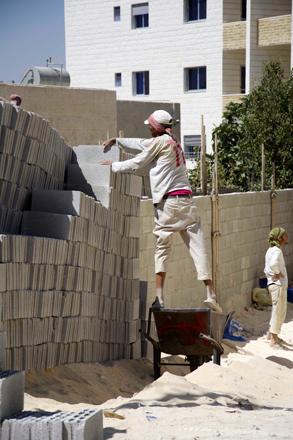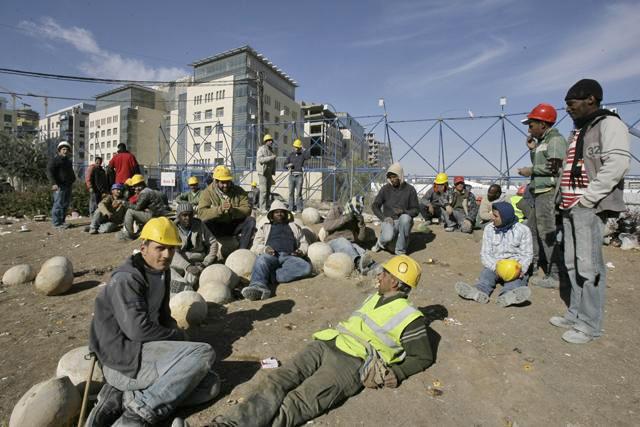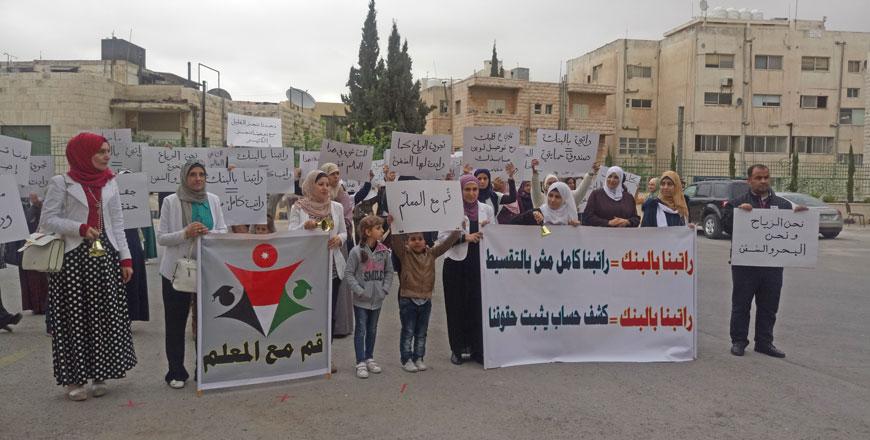You are here
Labour protests rise by 22% in 2016 — report
By Hana Namrouqa - Apr 09,2017 - Last updated at Apr 10,2017

The number of labour protests organised by the private sector increased last year due to receding decent working conditions, low salaries and weak social protection, according to an analyst (Photo by Amjad Ghsoun)
AMMAN — Labour protests increased by 22 per cent last year, a rise which reflects the gravity of Jordan's socioeconomic crisis, a new report suggests.
A total of 288 labour protests were organised in 2016, compared to 236 protests the previous year, according to the seventh annual report on labour protests for the year 2016, released by the Phenix Centre for Economic and Informatics Studies.
Although the number of last year's labour protests remained lower than the number of protests organised between the years 2011-2013, the number remains high and constitutes an indicator of the tensions in the Jordanian labour market, according to the report.
"The concentrated number of labour protests reflects the deep socioeconomic crisis which Jordan is going through. These are indications of the continuing deterioration of decent work conditions, of low and fluctuating salaries, of the evasion of health insurance and of rising taxes," the report indicated.
The report noted that Jordan's labour market is still suffering from major gaps, including the offering of sufficient and decent job opportunities, the provision of social protection for workers, allowing all workers the right to form and join trade unions, and protecting marginalised groups in the labour market, such as women, children and people with disabilities.
Private sector workers organised the majority of labour protests in 2016, according to the report, which showed that 185 private sector protests made up 64 per cent of the total protests organised last year.
The public sector was responsible for 23 per cent of last year's protests, according to the report, which noted that the unemployed staged 36 protests, representing 13 per cent of the overall protests.
Ahmad Awad, Director of the Phenix Centre for Economic and Informatics Studies, said that several factors caused the number of public sector protests to drop, while prompting a surge in private sector protests.
"There are three main reasons why the protests in the public sector dropped last year; first, the government has restructured and raised employees' salaries; second, working conditions in the public sector improved with regards to overtime, holidays and social security; the third reason is that the government pressures its employees to prevent them from organising or participating in protests," Awad told The Jordan Times.
Meanwhile, the number of labour protests organised by the private sector increased last year due to receding decent working conditions, low salaries and weak social protection, the analyst said.
Two main tools can help lift working conditions in the private sector, he argued.
"The government should increase the efficiency and the number of Labour Ministry inspectors. Some 150-200 inspectors are responsible for monitoring workers' rights in tens of thousands of facilities across the country," Awad said.
In addition, the government should allow all workers to form and join trade unions, he said, noting that unions can assist the government in safeguarding workers' rights and improving working conditions.
"Some 95 per cent of Jordan's workers are deprived of representation by a union," Awad said, calling for the amendment of the civil service system to allow public sector employees to start their own trade unions.
Related Articles
Last year witnessed a “remarkable” drop in the number of labour protests despite the lack of measures to improve workers’ conditions, according to the Phenix Centre for Economic and Informatics Studies.
AMMAN — Working conditions in the Kingdom remain "far from the decent work standards" and continue to deteriorate in several economic sector
AMMAN — The Jordan Labour Watch (JLW) has said that the decrease in the number of labour protests staged across the country during 2017 is n


















